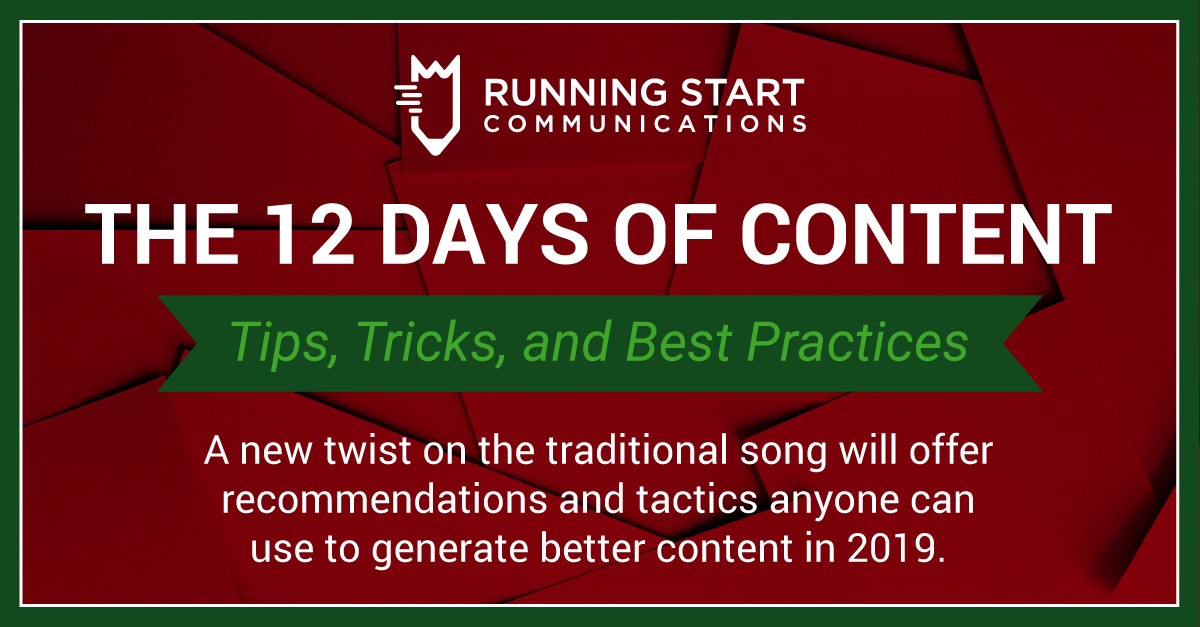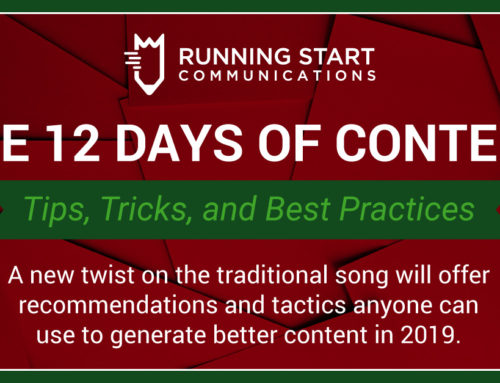
On the first day of “Content,” a random writer gave to me …
One key point, which is to recommend you only convey one key point with any content piece.
This may seem surprising, especially when the products and services we market are capable of delivering so many benefits to so many different audiences. After all, if we’re trying to generate as much interest as possible, why wouldn’t we communicate all the information we have at our disposal?
It may also seem like a risky approach. For example, a B2B technology product marketing team may spend weeks, even months, finalizing comprehensive positioning documents that detail a new product’s features and capabilities. Writers tend to err on the side of including too much information, if only to show product marketing that they used everything in the product positioning document.
Also, writers and lead generation teams usually run final drafts by product marketing or product management, seeking confirmation that “we got it right.” Unfortunately, these teams rarely have the experience needed to produce external marketing content or press releases. Instead, they resort to a default approach of over-inclusion: The majority of the time they add even more features and technical details. Writers and project managers defer to them as subject matter experts, but the result is a marketing piece that is too long, disorganized, and not as good as it should be.
The power of one
So what should we do? The answer lies in investing the time and effort (before you start writing) to elevate all of the information you have to a single, over-arching message. This can then be supported by all of the other information you have, including product features, expected benefits, specific capabilities, use-case examples, and more.
It’s really not a radical concept. Just about every creative briefing document on the planet uses the same approach by requiring clients to define the one key point that must be conveyed for the resulting piece to be successful. These documents then ask for the appropriate amount of supporting details to support the initial claim or provide specific proof. Anything “extra,” or that doesn’t clearly match up to the key message should not be included.
Unfortunately, in today’s high-paced, digital world, creative briefs seem to be going out of style (more on this in a future blog). I think it’s a mistake and still recommend that any writer or content marketer do all they can to get this information, even if they have to come up with a first stab themselves.
Here’s another reason why it’s better to focus on a single message: It makes your content stronger. If you think about it, content marketing today is a competition to stand out and catch your prospect’s attention. Writing a piece that is clear, well organized, and offers a logical flow from top to bottom is one of the best ways to consistently accomplish both of these goals.
And what should you do when product management or other stakeholders push back and request that you include more/all of the features from their latest release? Four quick suggestions:
- First, make sure that you’ve read their product positioning document, and that you know what’s in it. Product teams tend to assume content writers don’t read these documents (often rightly so!), so this little effort can go a long way to avoiding a misunderstanding.
- Let them know that there is plan to communicate all of this information, but that it will happen over a wide variety of marketing pieces, not crammed into a single press release or email.
- Help brainstorm additional pieces that would follow this single-message approach. For example, if a new product has new features that provide industry-specific benefits as well as technical capabilities, develop content that speaks to each group individually.
- Stand strong. When internal product owners edit your next piece, politely explain the rationale but don’t accept any new content that doesn’t align with your key message.
Use a single nail
Remember, it’s all about generating content that a prospect will read, understand, and act on. Throwing everything at them all at once may seem to be the right thing to do – after all, it is all good information – but this approach waters content down to the point where prospects don’t understand what it means to them, or worse, won’t read it at all.
Here’s an anecdote to help illustrate the point:
A creative director at a famous ad agency kept two boards on his desk. The first had hundreds of nails hammered through it, sticking point side up (like a magician’s prop). The other board had just a single nail.
When clients asked about their significance – or tried to force too much into a particular ad concept – the creative director asked them to put a hand on the nails on each board and lean into them. When they were finished, he would asked them which board made the biggest impression (no pun intended) and which “message” was the most memorable.
The takeaway is the board with hundreds of nails made it impossible to notice or remember the effect of a single point. But leaning into a single nail – while slightly painful – resulted in a vivid experience that was hard to forget.
So when you go to create your next content piece, use just a single nail. Not only will you save time and effort trying to fit hundreds of other nails onto your creative “board,” but you’ll create a piece your prospects will clearly understand and remember.
I hope you enjoyed the first day of “The 12 Days of Content (Tips, Tricks and Best Practices).” I hope you’ll stay tuned for tomorrow’s “gift” – two recommendations for creating better content.


Leave A Comment